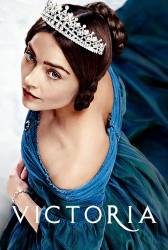Factual error: Captain Souter is shown lying dead in the snow following the massacre at Gandamak. In fact, Thomas Souter was one of the few who survived to be captured by the Afghans and was later freed.
The King Over the Water - S2-E7
Factual error: When Victoria and Albert visited Blair Atholl in 1844 (actually two years before the events depicted in the previous episode, which occurred in 1846), the Duke of Atholl was mad and locked away in a London townhouse, as he had been for 46 years. The man who hosted them and is depicted by the 70-year-old Denis Lawson was actually his nephew and heir, Lord Glenlyon, who was then only 30 and succeeded his uncle as duke in 1846.
Factual error: Edward Drummond, Sir Robert Peel's private secretary, is several times seen sitting next to him in the House of Commons. Drummond was a civil servant, never a Member of Parliament.
Factual error: Baroness Lehzen was dismissed by Queen Victoria (on the instigation of Prince Albert, who disliked her) and returned to her native Germany in 1842. In the series, she is still head of the household in 1846.
Factual error: Edward Drummond was assassinated in 1843 by a madman who mistook him for Sir Robert Peel. In the series, he is still very much alive three years later.
Factual error: Harriet Sutherland's husband did not die in a riding accident in the 1840s. He died of natural causes in 1861 at the age of 75.
Brocket Hall - S1-E3
Factual error: Whilst hanging, drawing and quartering was indeed still the prescribed penalty for treason (and would remain so for the most serious offences until 1870, although the Newport Chartists were the last to actually receive the sentence), this barbaric punishment had not actually been carried out since the 17th century. By the 19th century the condemned person was hanged until dead and the head then symbolically severed by a surgeon. Nobody, least of all Lord Melbourne, would have believed in 1839 that the full punishment was going to be carried out, but they all talk as though they expect it to be.
Factual error: Victoria and Albert receive a wedding present from the Lord Mayor of Leicester. The Mayor of Leicester did not receive Lord Mayor status until 1928.
Factual error: Schloss Rosenau, Prince Albert's home in Coburg, looks nothing like the place depicted. It is not atop a hill and actually looks more like a country house than a fairytale castle.
Factual error: The real Duchess of Buccleuch was 30 when she was appointed Mistress of the Robes, fifty years younger than Diana Rigg, who plays her here.
Factual error: Season 2 ends in 1846 with the repeal of the Corn Laws. Lord Melbourne didn't die until 1848, but his death was shown earlier in the season.
The Luxury of Conscience - S2-E8
Factual error: Drummond's assassin is said to have been a farmer who was angry about the repeal of the Corn laws. He was actually Daniel M'Naghten, a woodturner who was found not guilt by reason of insanity and was under the delusion he was being persecuted by the Tory Party. Drummond did not take a bullet for Peel. Peel was not with him at the time. M'Naghten mistook him for Peel as he left Peel's house and shot him in the back.
Factual error: Lord Palmerston was not a young, fashionable, rakish man-about-town at this time. He was actually 64 when the series begins in 1848, eight years older than Lord John Russell, the Prime Minister, depicted as a much older man.
Factual error: The Duke of Wellington submits his resignation as Commander-in-Chief in 1851. In reality, he remained in the post until his death the following year.
Factual error: The Mistress of the Robes throughout series 3 is the fictional Duchess of Monmouth. The real Mistress of the Robes at this time was the Duchess of Sutherland, who was in the first two series.
Factual error: The King of Prussia appears at the Great Exhibition in 1851 with his son the Crown Prince. In fact, King Friedrich Wilhelm IV, who ruled Prussia from 1840 to 1861, had no children.
Factual error: Henry Cole is addressed as Sir Henry at the opening of the Great Exhibition in 1851. He was actually not knighted until 1875.






Answer: There seems to be some confusion here. The first son born to Queen Victoria and her husband, Prince Albert, was also named Albert (later known as King Edward VII), and was born in August 1844. Prince Albert, Sr.'s father, Ernest I of Germany, died the same year his grandson was born, but the timing of his death would have no bearing on when Albert Jr. was conceived and born. Prince Albert, Sr., Victoria's husband and Albert Jr.'s father, died in 1862. (Victoria's husband was always known as Prince Albert, never as "King Albert" which may explain the confusion.)
raywest ★